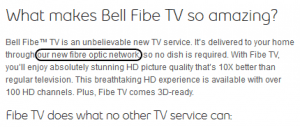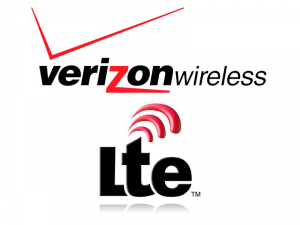Ebenezer Scrooge could successfully serve as the CEO of any large telecommunications company these days, and the New York Times knows a Christmas tale of woe when it sees one. That is why the venerable newspaper printed a Christmas Eve editorial blasting Verizon’s new “non-aggression treaty” with America’s largest cable companies that puts coal in the stocking for any Verizon customer waiting for FiOS fiber-to-the-home service. The newspaper believes the days of FiOS are numbered:
Verizon — Verizon Wireless’s main shareholder — relieved itself of the need to expand FiOS, its high-speed, fiber optic network, beyond the 18 million homes it set out to reach six years ago, a rollout that cost $23 billion. For the other 114 million homes in the country, it can simply bundle its wireless service with the cable and wireline broadband services of its partners. The agreement between Verizon and the cable carriers includes a joint venture to develop technology to integrate the wireline and wireless platforms.
Verizon’s cable deals squashed hopes that cable carriers’ purchases of wireless spectrum would lead to more competition against the dominant players, AT&T and Verizon Wireless. And it puts in doubt whether FiOS will ever be a serious competitor to cable, reducing the likelihood that video transmitted over broadband could break up cable’s regional oligopolies.
[…] Verizon’s deals suggest a future in which cable carriers will get uncontested control of high-speed broadband into the home while AT&T and Verizon will get uncontested control over wireless. For consumers with expensive wireless plans, pricey bundles of cable channels and costly, slow broadband, this does not look like good news.
 Verizon’s economic future lies in the lucrative world of wireless. Its FiOS network was an expensive gamble to reinvent its antiquated telephone network to drive customers to keep their landlines and spent a hundred dollars more on video entertainment and super fast broadband. Wall Street hated the price and loathed the potential for costly competition that would force earnings down through aggressive price-cutting. In some markets, Verizon FiOS has forced Comcast, Cablevision, and Time Warner Cable to be a little more generous with broadband speed and lighten up a little on the annual rate increases.
Verizon’s economic future lies in the lucrative world of wireless. Its FiOS network was an expensive gamble to reinvent its antiquated telephone network to drive customers to keep their landlines and spent a hundred dollars more on video entertainment and super fast broadband. Wall Street hated the price and loathed the potential for costly competition that would force earnings down through aggressive price-cutting. In some markets, Verizon FiOS has forced Comcast, Cablevision, and Time Warner Cable to be a little more generous with broadband speed and lighten up a little on the annual rate increases.
But convincing cable customers to switch remains a difficult proposition even when Verizon offers the superior service. Verizon has not achieved the level of penetration it expected in many markets. In short, people just don’t want to wait around for installers. Besides, cable companies slash prices for customers threatening to depart.
Verizon’s deal with Time Warner and Comcast delivers Verizon Wireless desirable spectrum. But the agreement to cross-market and cross-bundle product lines smacks of collusion, and is exactly the kind of turf protection that has kept cable companies from competing head-to-head with each other for more than three decades. Is it more lucrative for Verizon to build out its FiOS network to compete or simply refer people to Time Warner or Cablevision for cable TV. So long as cable doesn’t offer a competing wireless product, Verizon seems to think there is little harm done.
But for consumers, the absence of competition brings rate increases, reduced innovation, and declining customer service.
The one thing the telecom marketplace needs less of is the “take it or leave it” attitude that earned the scorn of cable customers everywhere.


 Subscribe
Subscribe



